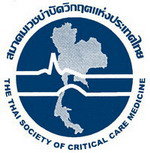The accuracy of the new non-invasive intra-abdominal pressure measurement by physical examination and ultrasound to diagnose intra-abdominal hypertension: The research protocol
NNIIAPM trail
DOI:
https://doi.org/10.54205/ccc.v31.261440Keywords:
Intra-abdominal hypertension, Ultrasonography, Intravesical pressure, ratio of anteroposterior to transverse abdominal diameter, Intra-abdominal pressureAbstract
ABSTRACT
Background: Twenty-five percent of critically ill patients in the intensive care unit have intra-abdominal hypertension, which causes high morbidity and mortality. The gold standard non-invasive method for measuring intra-abdominal pressure to diagnose intra-abdominal hypertension is intravesical pressure measurement. Unfortunately, the standard method has several limitations. The aim of this study is to invent a new, non-invasive method to diagnose intra-abdominal hypertension.
Methods: This is a cross-sectional study to determine the accuracy of the new non-invasive intra-abdominal pressure measurement by physical examination and ultrasound to diagnose intra-abdominal hypertension compared to the intravesical pressure measurement.
Hypothesis: We hypothesize that physical examination and ultrasound can be used to diagnose intra-abdominal hypertension and the ratio of maximal anteroposterior to transverse abdominal diameter minus fat thickness and intra-abdominal pressure has a correlation.
Ethics and dissemination: The study received ethical approval from the Institutional Review Board of Faculty of Medicine, Chulalongkorn University. We plan to disseminate the results in peer-reviewed journals related to critical care medicine or surgery and at national or international conferences.
Downloads
References
Tayebi S, Gutierrez A, Mohout I, Smets E, Wise R, Stiens J, Malbrain M: A concise overview of non-invasive intra-abdominal pressure measurement techniques: from bench to bedside. J Clin Monit Comput. 2021, 35(1):51-70.
Kirkpatrick AW, Roberts DJ, De Waele J, Jaeschke R, Malbrain ML, De Keulenaer B, Duchesne J, Bjorck M, Leppaniemi A, Ejike JC et al: Intra-abdominal hypertension and the abdominal compartment syndrome: updated consensus definitions and clinical practice guidelines from the World Society of the Abdominal Compartment Syndrome. Intensive Care Med. 2013, 39(7):1190-1206.
Malbrain ML, Cheatham ML, Kirkpatrick A, Sugrue M, Parr M, De Waele J, Balogh Z, Leppaniemi A, Olvera C, Ivatury R et al: Results from the International Conference of Experts on Intra-abdominal Hypertension and Abdominal Compartment Syndrome. I. Definitions. Intensive Care Med. 2006, 32(11):1722-1732.
Patel A, Lall CG, Jennings SG, Sandrasegaran K: Abdominal compartment syndrome. AJR Am J Roentgenol. 2007, 189(5):1037-1043.
Popescu GA, Bara T, Rad P: Abdominal Compartment Syndrome as a Multidisciplinary Challenge. A Literature Review. J Crit Care Med (Targu Mures). 2018, 4(4):114-119.
Brunicardi FC, Andersen DK, Billiar TR, Dunn DL, Kao LS, Hunter JG, Matthews JB, Pollock RE. In: Schwartz's Principles of Surgery, 11e. New York, NY: McGraw-Hill Education; 2019.
Bouveresse S, Piton G, Badet N, Besch G, Pili-Floury S, Delabrousse E: Abdominal compartment syndrome and intra-abdominal hypertension in critically ill patients: diagnostic value of computed tomography. Eur Radiol. 2019, 29(7):3839-3846.
Sugrue G, Malbrain M, Pereira B, Wise R, Sugrue M: Modern imaging techniques in intra-abdominal hypertension and abdominal compartment syndrome: a bench to bedside overview. Anaesthesiology Intensive Therapy. 2018, 50(3).
Pickhardt PJ, Shimony JS, Heiken JP, Buchman TG, AJ F: The Abdominal Compartment syndrome: CT finding AJR. 1999, 173:575-579.
Zissin R: The Significance of a Positive Round Belly Sign on CT. American Journal of Roentgenology. 2000, 175:267-268.
Kumar S, Neyaz Z, Gupta A: The utility of 64 channel multidetector CT angiography for evaluating the renal vascular anatomy and possible variations: a pictorial essay. Korean J Radiol. 2010, 11(3):346-354.

Downloads
Published
How to Cite
Issue
Section
License
Copyright (c) 2023 The Thai Society of Critical Care Medicine

This work is licensed under a Creative Commons Attribution-NonCommercial 4.0 International License.




